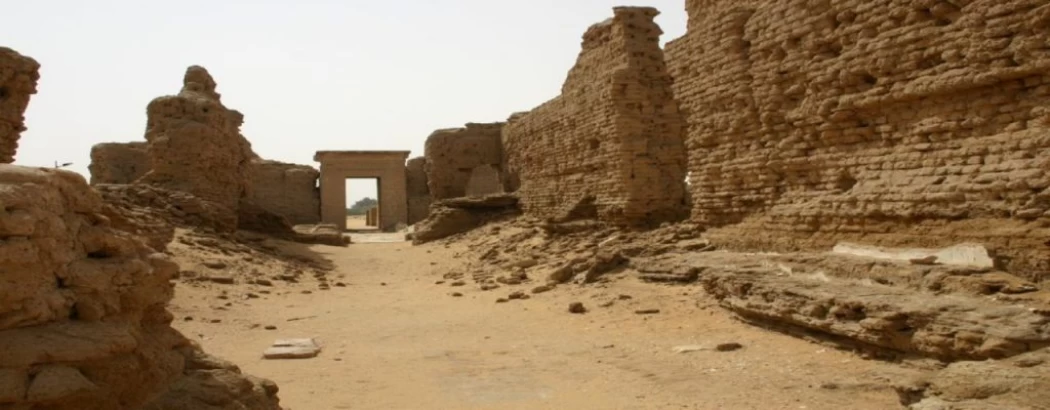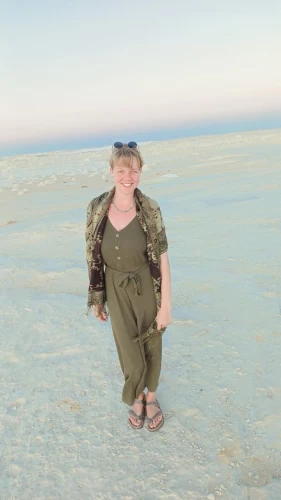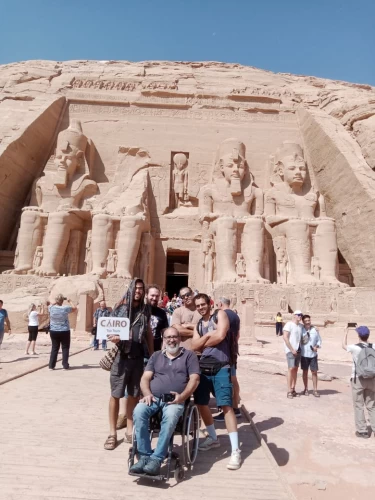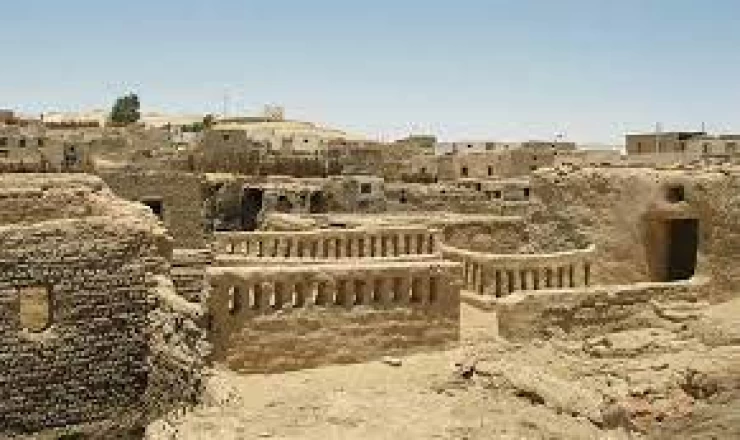
Temple of El Zayyan
The remains of el-Zayyan Temple, one of the biggest and most significant ancient towns in Kharga Oasis, may be found close to the main road, around 75 kilometers north of Dush towards Kharga City.
The city was once named Takhoneourit, which translates to "The Great Well," and was one of the several stronghold chains established throughout the Ptolemaic and Roman eras. The Greeks called it Tchonemyris. The nearby town of Tchonemyris was located a bit to the fortress's west. The town features high mudbrick walls and was previously unexcavated, although there appears to have been some clearing work recently.
Should I be worried about traveling to Egypt during December?
As a prominent water supply in ancient times, Tchonemyris was undoubtedly of enormous significance and would have been a stopover or overnight halt for travelers. During Roman times, a significant desert road connected the towns of Esna and Qasr el-Zayyan. Ancient travelers would have encountered various wells and farming settlements along the 7km northward route from Dush to the citadel and Qasr el-Ghueita, many of which still exist.
At 18 meters below sea level, the site of the stronghold is the lowest point in El Kharga Oasis in Egypt. This is one of the few Kharga strongholds not located on high land with an excellent view of the surrounding countryside, even though the fort lies on a minor elevation. There must have been a sizable and rich community here. The old community's graves can be located on the bottom floor as well. Due to the abundance of water in this area of the Oasis, it's possible that Qasr el-Zayyan played a more agricultural function than a defensive one.
The fortress's rectangular mudbrick enclosing walls, which measure 26 by 28 meters, are still in good condition. The enclosure inside the stronghold served as the Roman garrison's living quarters, and recent excavations by the Supreme Council of Antiquities have revealed chambers with kilns and hearths, a water cistern, and a cache of Roman coins as well as metal and glass artifacts. On the western side of the enclosure, the remnants of the Great Well may still be seen near the enclosure wall and are protected by a domed mudbrick roof.
The Romans knew the god "Amun of Hibis" as Amenibis, and there is a temple within the castle walls devoted to him as well as other Hibis deities. When it was initially erected in the Ptolemaic Period, this modest sandstone temple was just 7.5m by 13.5m in size. However, it was renovated under Antoninus Pius's Roman reign, and a brick hall measuring 22m long was added in front of the original building.
The general of the forces, Plinius Capito, and the commander-in-chief of the army, Septimus Macro, are both mentioned in the inscription. The dedication is marked with the date August 11, 140 AD, which corresponds to the third year of Caesar Titus Aelius Adrianus Antonius Augustus, the Pius. To access the temple, one must pass through a sandstone gate on the enclosure's southern side, which bears the following dedicatory inscription in Greek: "To Amenibis the great god of Tchonemyris and the other gods of the temple, for the eternal preservation of Antoninus Caesar, our Lord, and his whole house. The temple and vestibule were restored by the prefect Avidius Heliodorus, Governor of Egypt."
The sanctuary or offering chamber of the main temple structure features an exquisite cult niche in the back (north) wall and is connected by a court. In the antechamber, there is a stairway that ascends to the roof, from where most of the temple may be viewed. Georg Schweinfurth, a German geographer, visited the location in the later half of the 19th century and discovered cast bronzes, ceramics, coins, and glass inside the enclosure. The Egyptian Antiquities Organization carried out contemporary temple repair from 1984 to 1986, and the Supreme Council of Antiquities has more recently conducted considerable excavation and reconstruction.
The castle of Qasr el-Ghueita is not far from Qasr el-Zayyan, which is located approximately 30 kilometers to the south of the city of el-Kharga. Road access is simple, therefore a 4x4 vehicle is not required.
Looking for an adventure? Egypt Desert Safari tours packages are the perfect way to explore the country's unique landscape. From the vast open plains to the magnificent pyramids, there's so much to see and do through our Egypt tours.
Whether you're looking for a relaxing holiday by the beach or an action-packed adventure, we have the perfect Egypt travel package for you. We've got a variety of Egypt travel packages to choose from, so you can pick the one that's right for you. Whether you're looking for a budget-friendly option through our Egypt Cheap Budget Tours or an all-out luxury experience, with our Egypt Luxury Tours packages.

















